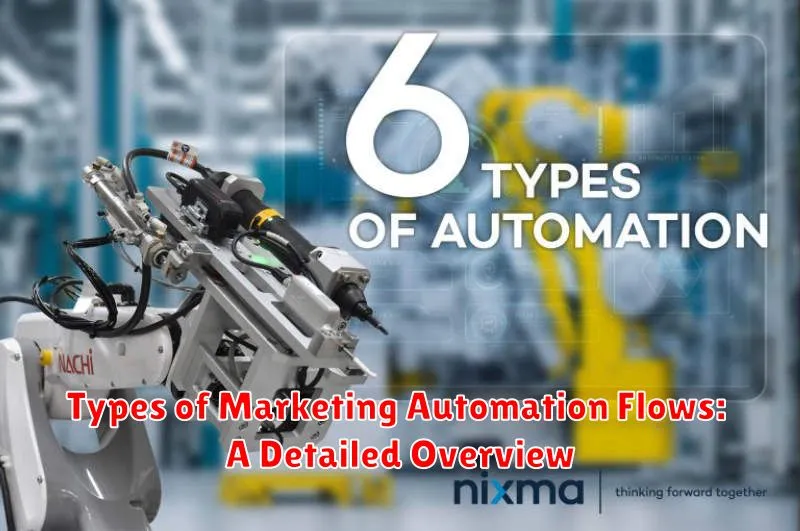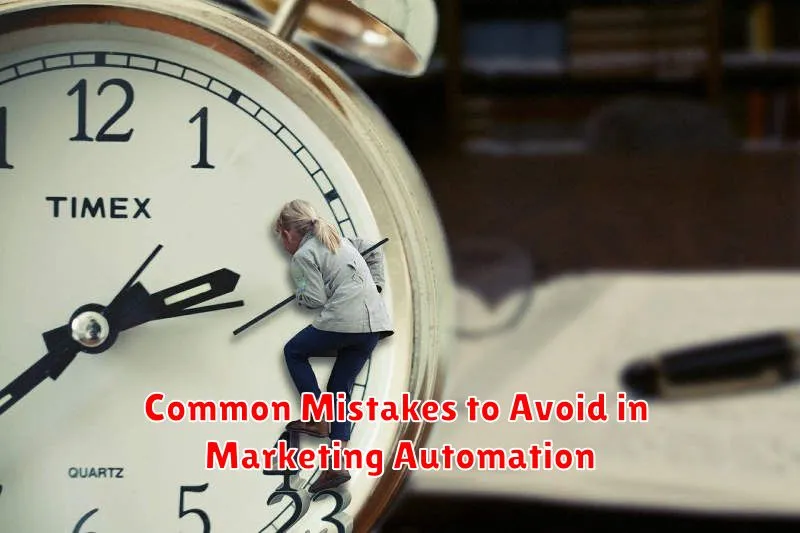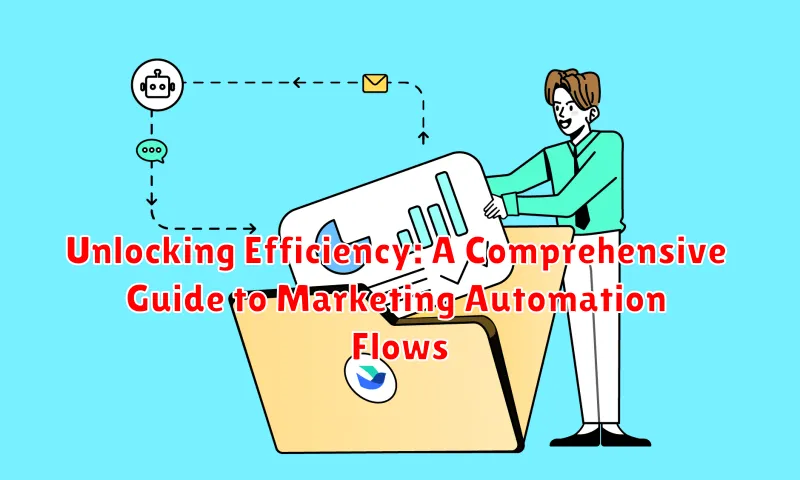In today’s fast-paced digital landscape, marketing automation flows are no longer a luxury, but a necessity for businesses seeking to enhance efficiency, improve customer engagement, and drive significant revenue growth. This comprehensive guide delves into the core principles of marketing automation, providing a structured approach to understanding, implementing, and optimizing these powerful workflows. From small startups to large enterprises, mastering automated marketing processes allows organizations to streamline their efforts, personalize customer experiences at scale, and ultimately, achieve a higher return on investment from their marketing campaigns globally.
This guide, “Unlocking Efficiency: A Comprehensive Guide to Marketing Automation Flows,” is designed to equip you with the knowledge and tools needed to successfully navigate the world of marketing automation. We’ll explore various types of automation flows, including lead nurturing sequences, email marketing campaigns, and customer onboarding processes. You’ll learn how to define your target audience, segment your customer base, and create personalized marketing messages that resonate with each individual. By leveraging the power of marketing automation, you can free up valuable time and resources, enabling your marketing team to focus on strategic initiatives and creative endeavors, while your automated flows handle the repetitive tasks, leading to increased productivity and better overall results.
What is Marketing Automation and Why is it Important?
Marketing automation refers to the use of software to automate repetitive marketing tasks. These tasks include email marketing, social media posting, and other website actions. By automating these processes, businesses can streamline their workflows, improve efficiency, and deliver more personalized experiences to their customers.
Why is it important? Marketing automation offers significant benefits. Firstly, it enhances efficiency by freeing up marketing teams from manual tasks, allowing them to focus on strategic initiatives. Secondly, it enables personalization at scale, delivering targeted messages based on customer behavior and preferences. Finally, it improves lead nurturing, guiding potential customers through the sales funnel with relevant content and offers.
Key Components of Effective Marketing Automation Flows
An effective marketing automation flow relies on several key components working in harmony. Understanding these components is crucial for building flows that deliver results.
- Target Audience Segmentation: Precisely defined segments allow for personalized and relevant messaging.
- Triggers: These are the events that initiate an automation flow, such as form submissions or website visits.
- Actions: Actions are the automated tasks performed within the flow, including sending emails, updating contact properties, or assigning tasks to sales representatives.
- Content: Compelling and relevant content is essential for engaging your audience at each stage of the flow.
- Timing and Frequency: Optimal timing and frequency of messages are crucial to avoid overwhelming or irritating your audience.
- Personalization: Using personalized content based on user data increases engagement and conversion rates.
- Analytics and Reporting: Tracking key metrics and generating reports allows for continuous optimization and improvement.
Each component plays a vital role in ensuring that the marketing automation flow achieves its intended objectives. A well-designed flow will integrate these elements seamlessly to deliver a cohesive and effective customer experience.
Types of Marketing Automation Flows: A Detailed Overview

Marketing automation flows come in various forms, each designed to address specific business needs and customer interactions. Understanding these different types is crucial for implementing effective strategies.
1. Welcome Series Flows
These flows are triggered when a new subscriber or customer joins your list. The goal is to introduce your brand, provide valuable content, and encourage engagement.
2. Lead Nurturing Flows
Designed to guide potential customers through the sales funnel, lead nurturing flows deliver targeted content based on their interests and behavior.
3. Abandoned Cart Flows
These flows target customers who have added items to their cart but haven’t completed the purchase, reminding them of their selected items and offering incentives to finalize the transaction.
4. Post-Purchase Flows
Focused on retaining existing customers, post-purchase flows provide support, request feedback, and suggest relevant products or services based on their past purchases.
5. Event-Triggered Flows
These flows are activated by specific events, such as a website visit, a form submission, or a product download, allowing for highly personalized and timely communication.
Building Your First Marketing Automation Flow: A Step-by-Step Guide
Creating your initial marketing automation flow might seem daunting, but with a structured approach, it becomes a manageable and rewarding process. This section provides a step-by-step guide to get you started.
Step 1: Define Your Goal
Clearly articulate the objective of your automation flow. What do you want to achieve? Examples include: lead generation, nurturing leads, onboarding new customers, or re-engaging inactive users.
Step 2: Identify Your Target Audience
Determine the specific segment of your audience you want to target. This will influence the messaging and content you use within the flow. Consider factors such as demographics, interests, and past behavior.
Step 3: Map Out the Flow
Visualize the customer journey. What actions will trigger the flow? What steps will the user take? Create a flowchart or simple diagram to map out the sequence of events and branching logic.
Step 4: Choose Your Trigger
Select the trigger that initiates the flow. Common triggers include: form submissions, website visits, email opens, or reaching a specific score threshold.
Step 5: Create Your Content
Develop compelling and relevant content for each step in the flow. This may include: email sequences, SMS messages, personalized website content, or social media ads.
Step 6: Set Up Your Automation Platform
Configure your chosen marketing automation platform to reflect the flow you’ve designed, incorporating triggers, actions, and delays as needed.
Step 7: Test and Refine
Thoroughly test your flow before launching it to ensure all elements function correctly. Monitor performance and make adjustments based on data and feedback.
Best Practices for Optimizing Your Marketing Automation Flows
To ensure your marketing automation flows are performing optimally, continuous monitoring and adjustments are crucial. Regularly assess the effectiveness of each stage in your flow.
Segmentation is key. Refine your audience segments based on behavior, demographics, and engagement levels to deliver more relevant content. Personalized messaging significantly improves engagement rates.
A/B test different elements within your flows, such as email subject lines, content, and call-to-actions. This data-driven approach helps identify what resonates most with your audience.
Maintain up-to-date and accurate data within your CRM and marketing automation platform. Data integrity is vital for effective targeting and personalization.
Regularly review and update your content library to ensure it remains fresh and relevant. Stale content can lead to disengagement and reduced conversion rates.
Common Mistakes to Avoid in Marketing Automation

While marketing automation offers significant benefits, several pitfalls can undermine its effectiveness. Avoiding these common mistakes is crucial for maximizing your ROI.
Neglecting Segmentation
Failing to segment your audience is a significant error. Sending generic messages to everyone results in low engagement and potentially alienates subscribers. Effective automation relies on targeted messaging based on demographics, behavior, and interests.
Ignoring Personalization
Similar to segmentation, lack of personalization reduces the impact of your campaigns. Use data to tailor content, subject lines, and offers to individual preferences.
Over-Automating Communication
Excessive automation can feel impersonal and robotic. Ensure your flows include opportunities for human interaction and avoid sending too many messages in a short period.
Failing to Monitor and Optimize
Neglecting to track key metrics and failing to optimize your flows based on performance data is a critical mistake. Regularly analyze results and make adjustments to improve engagement and conversion rates.
Not Testing Your Flows
Launching flows without proper testing can lead to embarrassing errors and damage your brand reputation. Thoroughly test all aspects of your automation before going live.
Tools and Platforms for Implementing Marketing Automation
Choosing the right tools and platforms is crucial for successful marketing automation. The market offers a wide array of solutions, each with its own strengths and weaknesses.
Key Considerations When Selecting a Platform:
- Scalability: Can the platform handle your growing needs?
- Integration: Does it integrate seamlessly with your existing CRM, email, and other systems?
- Ease of Use: How user-friendly is the interface?
- Pricing: Does the pricing model align with your budget and usage?
- Support: What level of customer support is provided?
Popular Marketing Automation Platforms:
- HubSpot: A comprehensive platform suitable for businesses of all sizes.
- Marketo: A robust platform designed for enterprise-level marketing.
- Mailchimp: A user-friendly option often favored by small businesses.
- ActiveCampaign: A platform known for its powerful email marketing automation features.
- Pardot (Salesforce Marketing Cloud Account Engagement): A B2B marketing automation platform.
Carefully evaluate your specific requirements and budget before making a decision. Many platforms offer free trials, allowing you to test their capabilities before committing.
Measuring the Success of Your Marketing Automation Efforts
Measuring the success of your marketing automation efforts is crucial for understanding its impact and identifying areas for improvement. Without proper measurement, you’re essentially flying blind. Key Performance Indicators (KPIs) provide quantifiable benchmarks to gauge the effectiveness of your flows.
Key Performance Indicators (KPIs) to Track
Here are some essential KPIs to monitor:
- Conversion Rates: Track the percentage of leads converting into customers at each stage of the flow.
- Click-Through Rates (CTR): Monitor the CTR of emails and landing pages within the flow to assess engagement.
- Open Rates: Analyze email open rates to determine the effectiveness of your subject lines and sender reputation.
- Website Traffic: Evaluate the increase in website traffic resulting from marketing automation campaigns.
- Return on Investment (ROI): Calculate the ROI of your marketing automation efforts by comparing the cost of implementation with the generated revenue.
- Lead Generation: Quantify the number of qualified leads generated through automated flows.
Regularly analyzing these metrics will provide valuable insights into the performance of your marketing automation flows, allowing you to refine your strategies and optimize for better results.
The Future of Marketing Automation: Trends and Predictions
The landscape of marketing automation is rapidly evolving, driven by advancements in artificial intelligence (AI), machine learning (ML), and increasingly sophisticated consumer expectations. We anticipate a future where automation becomes even more personalized, predictive, and seamlessly integrated across all customer touchpoints.
Here are some key trends and predictions shaping the future of marketing automation:
- AI-Powered Personalization: Expect hyper-personalized experiences driven by AI algorithms that analyze vast datasets to predict customer behavior and tailor messaging accordingly.
- Predictive Analytics: Marketing automation will leverage predictive analytics to anticipate customer needs and proactively deliver relevant content.
- Omnichannel Orchestration: Seamlessly connecting and automating experiences across all channels (email, social media, SMS, etc.) will be crucial for consistent customer journeys.
- Increased Focus on Privacy and Compliance: As data privacy regulations tighten, marketing automation will need to prioritize ethical data handling and compliance.
- Integration with Emerging Technologies: The integration of automation with technologies like voice assistants and the Internet of Things (IoT) will unlock new possibilities for engaging with customers.

